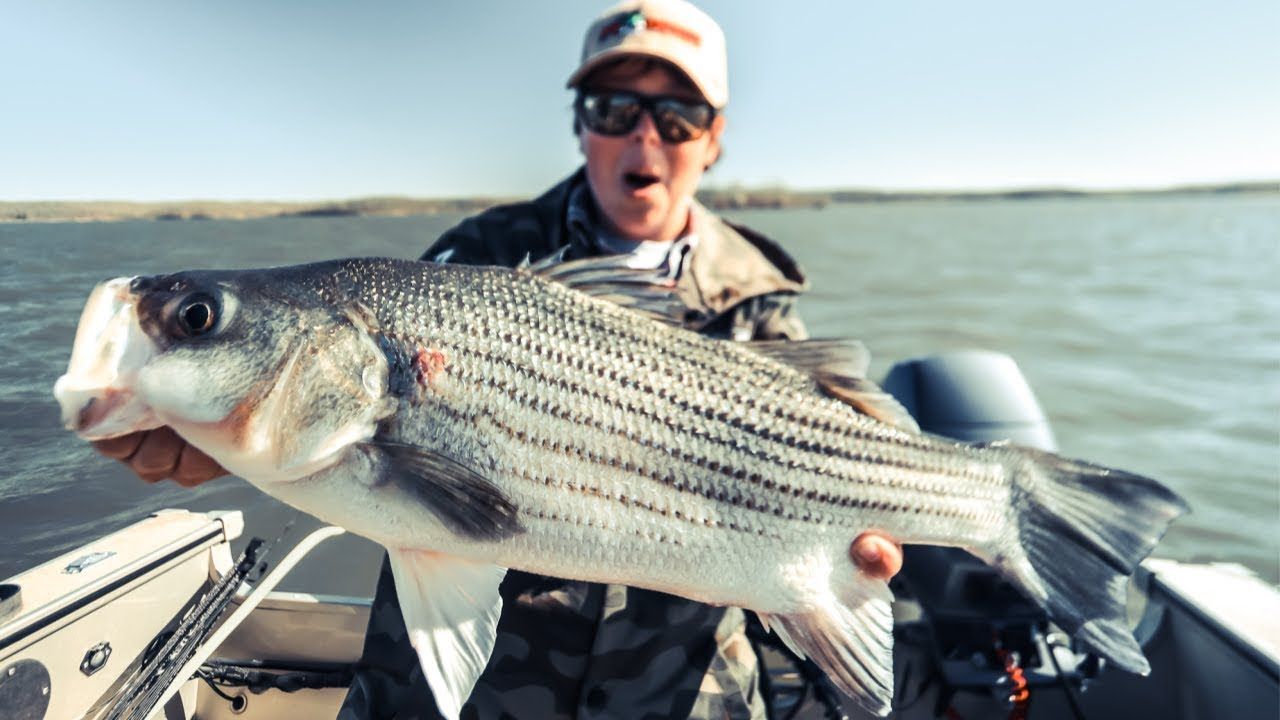Jump Fishing/Surface Feeding: Most exciting method; watch for birds diving (gulls, terns) or surface boils indicating feeding schools; approach quietly but quickly; cast large topwater lures, bucktail jigs, or lipless crankbaits into feeding zone; fast retrieve—hybrid bass chase aggressively; multiple strikes common; when school sounds (goes deep), watch for resurfacing nearby; cover water quickly following active schools
Vertical Jigging: Locate suspended schools with electronics in 20-45 feet; position boat over school; drop heavy slab spoon or bucktail jig directly below; aggressive lift-drop motion; vary jigging height and speed; hybrid bass often hit on the drop; multiple fish follow hooked fish creating chain reaction strikes; extremely effective for deep summer fish
Casting and Retrieving: Cast bucktail jigs, swim baits, or lipless crankbaits to likely areas (points, wind-blown banks, current areas); fast, aggressive retrieve; hybrid bass respond to speed and flash; fan cast covering water until school located; once one fish caught, work area thoroughly—schools typically contain many fish
Trolling: Cover large areas to locate roaming schools; troll deep-diving crankbaits, spoons, or umbrella rigs at 3-4 mph; use downriggers or heavy weights for summer depth; vary depths until finding schools; once located, stop and cast to school; effective for locating fish in vast open water
Live Bait Fishing: Large live shiners (4-6 inches) under slip bobbers near surface or mid-depth; free-line live shad or shiners in current areas; drift live bait over deep flats and channels; cut bait on bottom for less active fish; effective when lure fishing slow
Drift Fishing: Drift wind-blown points and open water flats; cast ahead of drift with bucktail jigs or swim baits; retrieve back to boat; cover large areas efficiently; effective for scattered schools; use drift sock to control speed
Dam Fishing: Tailwater areas below dams are prime hybrid bass habitat; cast into current with heavy jigs, spoons, or crankbaits; fish hold in current breaks; fast water concentrates baitfish; excellent opportunity where accessible
Night Fishing: Summer nights around lighted areas; lights attract shad which attract hybrid bass; cast large jigs or swim baits into lighted zones; retrieve through shadow/light transition; less productive than daytime but viable during extreme heat
Fly Fishing: Use 8-10 weight rods with intermediate or fast-sinking lines; large Clouser Minnows and Deceivers with fast stripping retrieve; during surface feeding, use poppers with aggressive stripping; hybrid bass readily take large flies
Deep Water Summer Pattern: Electronics essential for locating schools in 30-45 feet; position over suspended fish; vertical jigging with heavy spoons or jigs; maintain position using trolling motor or anchor; once school located, can provide fast action
Points and Humps: Focus on underwater structure with adjacent deep water; cast or troll along contours; hybrid bass cruise structure following baitfish; wind-blown sides most productive; morning and evening best

